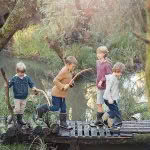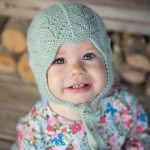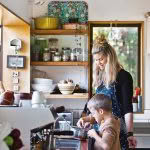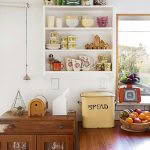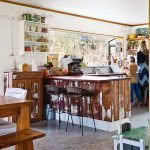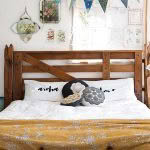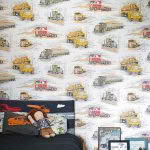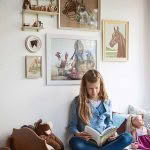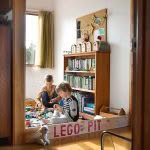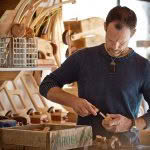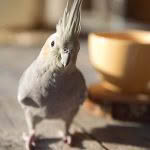An award-winning toy business run from a country Waikato home
- The Rolston buccaneers. (From left) Ty, Monte, Sawyer, Jada and Danny prepare to do battle in the bush beyond.
- There are lots of places to play around the property.
- Baby Willa, one, loves all the attention.
- Monte takes his turn with mum preparing dinner.
- A miniature mailbox in the kitchen is a good place to leave notes.
- Tapestries, wild flowers and recycled treasures are displayed next to the children’s art and crafts.
- Recycled timber fittings are a feature of the home.
- A gate makes a perfect headboard in the spare bedroom
- A room for a truck-mad boy.
- A room for a horse-mad girl. Jada curls up with a book beneath her pony art.
- The “Lego pit” means pieces never have to be put away.
- Jeremy began to make wooden rifles for his sons but now makes a range of wooden tools.
- Maisey the cockatiel looks hopefully for home-baked crumbs.
The kids play in the bush and fish in the stream. The adults work from home creating toys that win awards. imaginations are fuelled, dreams fulfilled. It’s a good life.
Words Venetia Sherson Photos Tessa Chrisp
When Dee met Jeremy 20 years ago it was clear they would one day alight in a place without traffic snarls or neon lights, where the noisy beat of a kereru’s wings would be the loudest sound around.
Dee was raised on a farm at Kinohaku, a speck-sized settlement on the shores of the Kawhia Harbour. She and her sisters and brother played imaginary games, built African pygmy huts in the bush, leapt feet-first from a high bridge into the harbour and helped their grandmother hand-milk her cows in return for milk and butter. “We had no television,” she says. “We made our own adventures.”
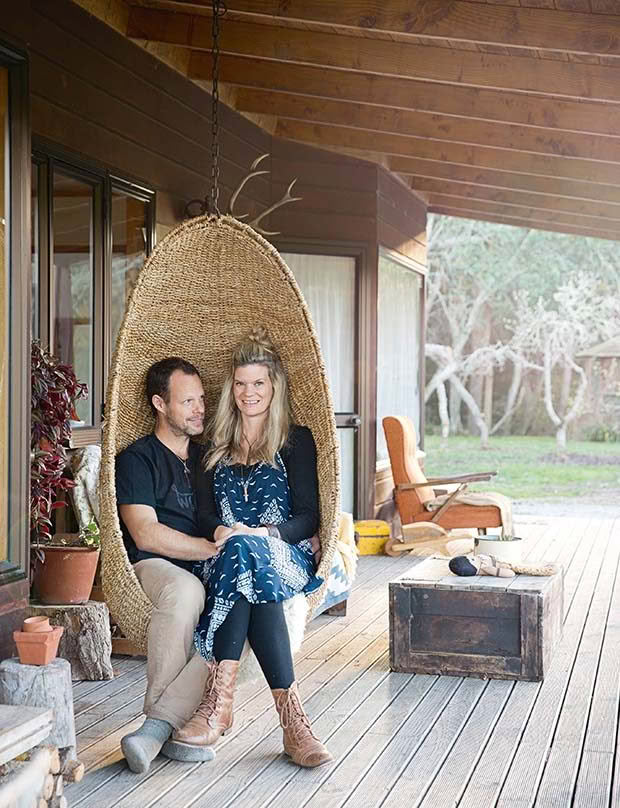
Jeremy and Dee.
Jeremy spent his childhood shifting homes as his father followed shearing gangs around the country. They moved 15 times before he reached his teens. He says he missed each home. But through the tapestry of ever-changing landscapes he cherishes one memory. When shearing was slow he and his dad would jump on a farm bike and go bush to hunt possums. They would kip overnight in makeshift shelters, boil the billy on an open fire and breathe the bush air. It was, he says, the best time ever.
This is a love story. But it’s more than a fairy tale about a beautiful blonde-haired young woman who married her best friend. It’s about a couple who share ideas about what childhood should be like. In this household of mum, dad and six kids aged from one to 12, real-time conversations are important; imagination is encouraged.
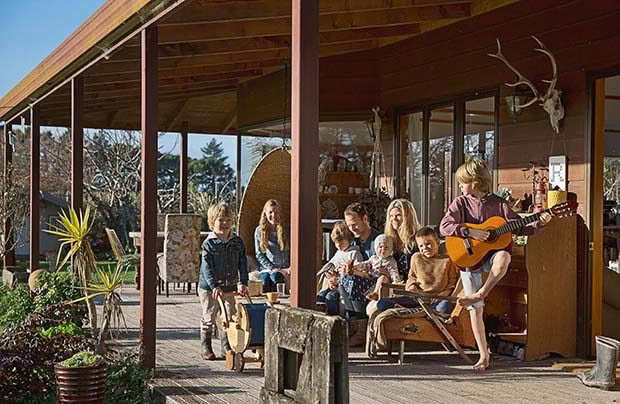
Music is a passion for Jeremy and the older children, and spontaneous singalongs take place when anyone picks up the guitar.
Monte, aged eight, is currently working on a graphic novel about a dog named TLSH, aka The Last Super Hero, who sometimes gets in trouble. When he finishes he might join his siblings to re-enact a scene from Lord of the Rings, or mount a pretend pony to hurdle jumps in the paddock.
Dee says she can count on one hand the number of times she has ever heard one of her children complain they are bored. “If they did,” she says. “I would suggest giving them a job to do.”
The good life for the Rolstons began officially eight years ago, when they bought a house on the road to Te Pahu near Raglan. But the seeds for their lifestyle were planted much earlier. They met through a church youth group when Dee was 18 and Jeremy 22. Jeremy says he first saw Dee at a concert and cymbals crashed.
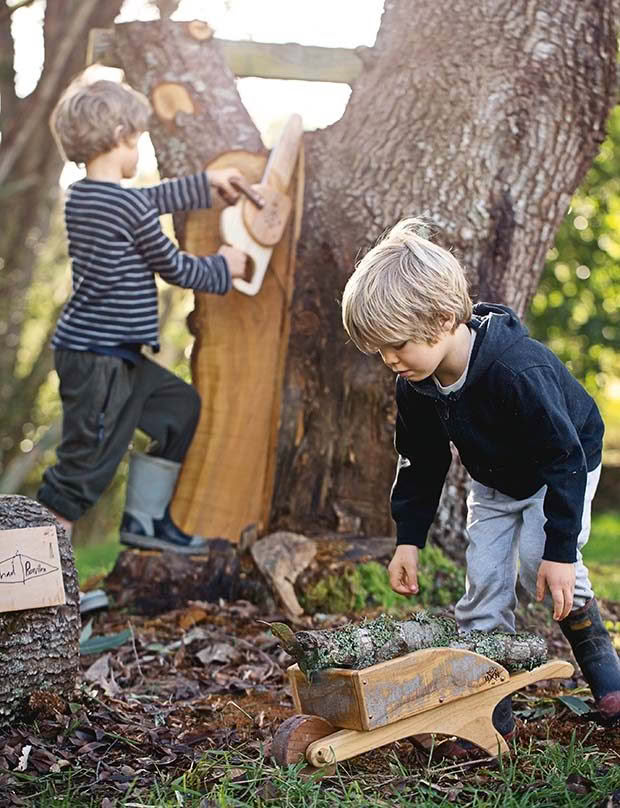
There’s no shortage of pint-sized tools when work has to be done, nor is there any lack of imagination when it comes to games, dressed-up or not.
They later became best mates. On their first date he took her for a walk in the bush and gallantly piggy-backed her across a river. Dee says she married Jeremy “because if some other girl married him, I would lose my best friend”.
Jeremy was a furniture-maker – a skill he had learned, with a black rubber-handled claw hammer, at the knee of his father. He was a skilled tradesman and topped New Zealand in his trade certificates in cabinet-making. Dee had a BA from Waikato University and a post-graduate diploma in English as a second language. Four years after their marriage they travelled to South Korea where Dee taught English and Jeremy – who had originally signed on as a caretaker – found himself instead teaching kindergarten. “It was great,” he says. “The best time. I could be myself.”
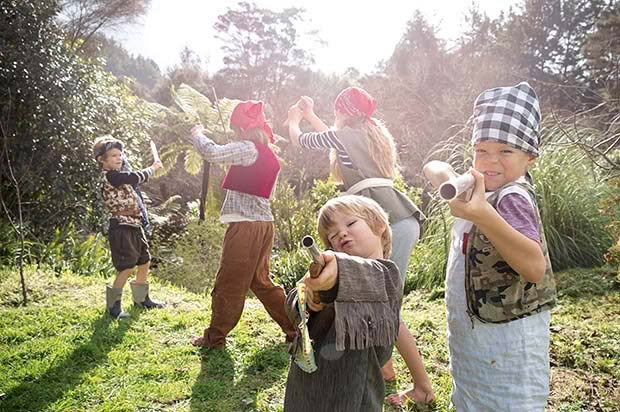
When the couple returned to Hamilton the furniture-making business had hit tough times as cheap imports flooded the country. Jeremy took up a position running a church youth group. But with the approaching birth of their third child, the couple realized they had outgrown their home.
“I think because I had moved so often, I also wanted a place where we could put down roots and the kids could have some space,” Jeremy says.
Paradise was found in the form of a large two-storied wooden home with a labyrinth of rooms, flanked by bush, a creek, an orchard and massive climbing trees. Soon after they moved in Monte was born in the front bedroom.
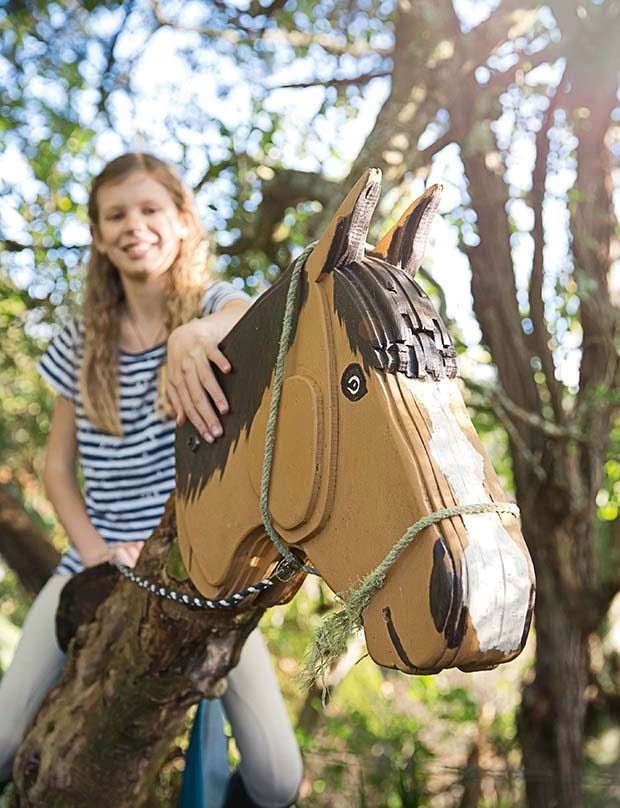
Part of the plan was always for Dee to home-school the children. “We didn’t want them to spend half their lives on a school bus or in a classroom.”
Their budget allowed for that, while Jeremy continued to earn a wage. Then he injured his back. Recuperating after a third operation he had an epiphany.
“When I was working, I was leaving home in the dark and not getting home until the children were in their pyjamas ready for bed. I thought there has to be a better way.” While he recovered, he made wooden toys for his children and their friends.
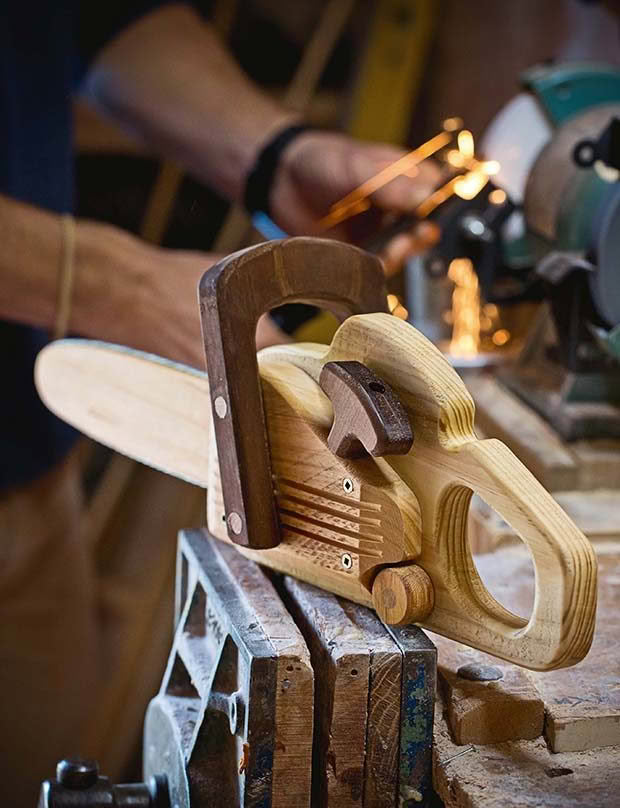
“I began to make more. In the end I had 20 toy rifles. At Christmas I put them online and sold them.” His new career was born.
His change in direction, dove-tailed beautifully with Dee’s passion as a doll-maker. Along with home-schooling, supervising chores and meals she makes exquisite cloth dolls from material sourced from op shops. The couple says a home business has made it possible for them to achieve a family-focused life that doesn’t involve long commutes, coffee on the run and no time for the children.
It may be an idyllic life, but it’s also busy. The day begins with breakfast around the family table followed by chores; school begins at 9am. All the children like reading books. They also love drawing and building things in Jeremy’s workshop. Learning is woven through their lives.
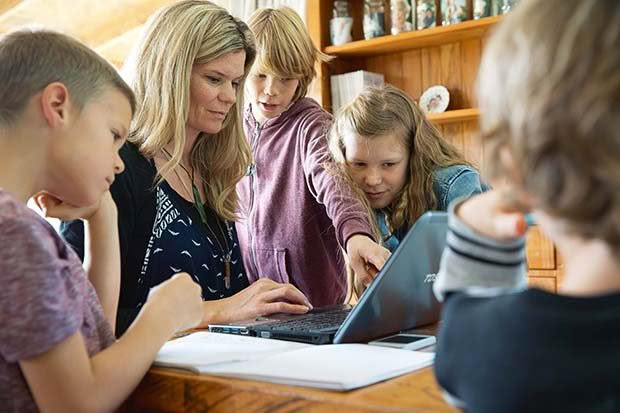
Learning is woven through everyday life.
“How much is two times three-quarters?” asks Jada, 12, as she sifts flour for a baking project. “Six quarters,” says Ty, 10. “That’s maths,” says Dee. The children take turns making meals. Jada likes making Italian chicken, Ty likes spicy meatballs; Monte makes lasagne. Danny, six, likes butter chicken. Sawyer (as in Tom Sawyer), who is four, likes mixing the meat for hamburgers while baby Willa, who is one, likes playing with dough. Once a week, when it is their turn to be the meal helper, the children have an exclusive “mum date”, where they sit separate from the other children and Dee has a chance to catch up with their week.
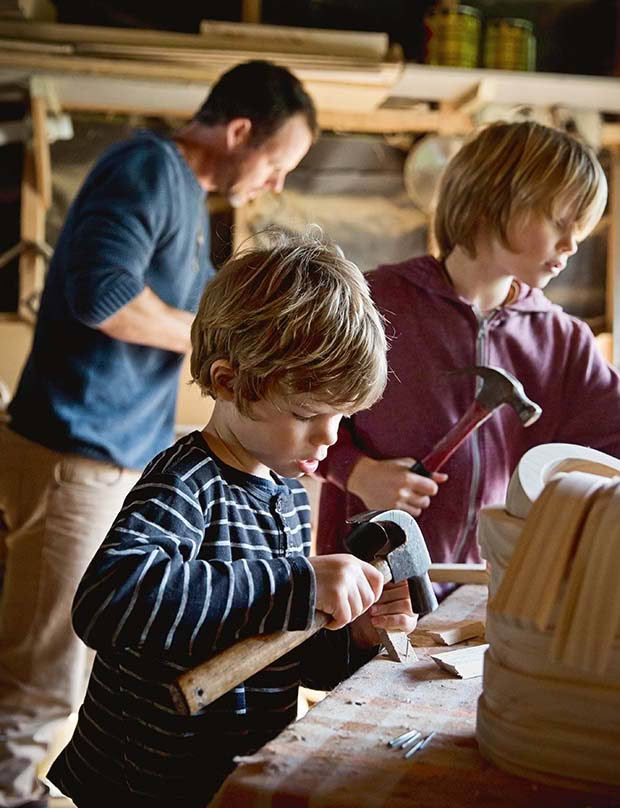
After lunch, the children head out to the workshop to build things with Jeremy, or dress up and play make-believe games. Each of their rooms reflects their passions. Jada has pictures and models of horses and a bookshelf of horsey books. Ty’s room is a replica of a bivouac, complete with antlers above the door, a corrugated iron roof and a log for a bedside table.
Monty’s room is a cricketing haven. Jeremy was a cricketer and his skills have been passed on to his children. A space exclusively for Lego is partitioned off, so it never needs to be cleaned away. Dee says she wants their home to reflect their values and their children’s passions. She rarely buys new gadgets, preferring to collect treasures from second-hand shops.

Ty’s bivouac, complete with antlers, was constructed by Jeremy as a surprise while Ty was on holiday.
In the evenings after dinner when Dee makes her dolls, Jeremy reads to the children and plays his guitar. He’s building his own instrument from kauri and black walnut. He says he gets huge pleasure from seeing the kids enjoying the things he loved as a boy. “They’ll often come in from the orchard with juice streaming out of their mouths from the fruit they’ve picked.”
He says he still has to pinch himself sometimes, to think that he can do what he does alongside Dee – “the woman of my dreams” – and his children. “They all are so fun, so precious, and the time is short.” He recently took his sons into the bush and boiled the billy on an open fire, just like he and his dad did. “It was magic.”
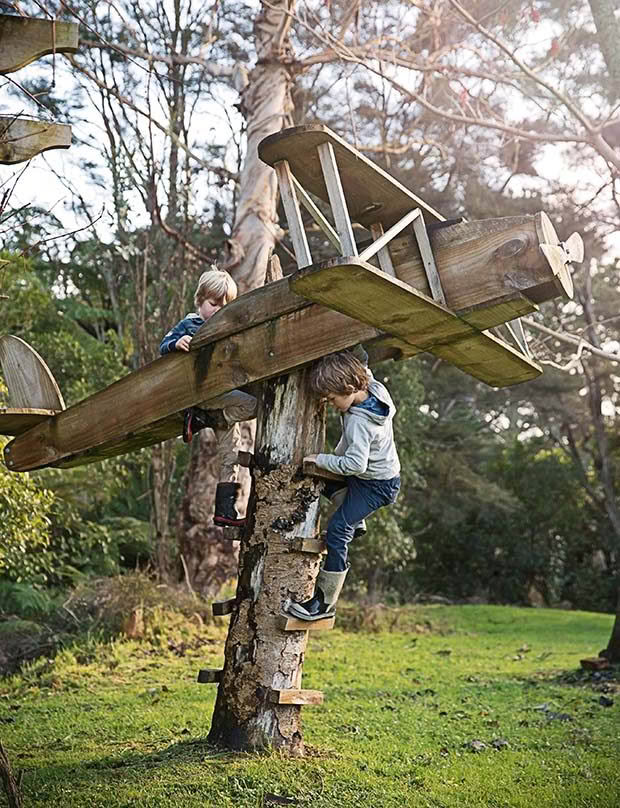
RISKS ARE PART OF LEARNING TO BE SAFE
Dee’s mother couldn’t watch when as a child Dee jumped off the tall bridge into the Kawhia Harbour several metres below. Dee now has to apply the same principle when her children scale the mighty macrocarpa where their tree hut is built. “Mum used to say, ‘I won’t
be able to save you if anything happens, because I can’t swim.’ But she never told me to stop.”
The Rolston children are at their happiest when they are having outdoor adventures, encouraged by their parents. Jeremy and Dee believe kids learn how to keep themselves safe through experience. “They need a bit of unsafe risk factor,” Dee says. “You can’t always be telling your kids to be careful. You have to show them how to take care of themselves.”
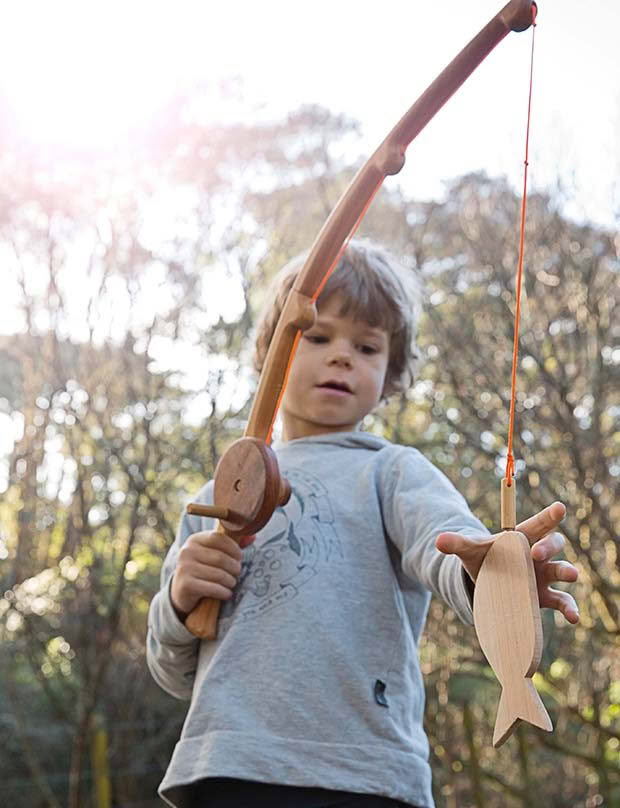
On their rural property there is bush, a creek and loads of climbing trees. The tree hut is high and hangs over a slope but the children have learned to navigate its slippery trunk and undergrowth. When they go possum hunting Jeremy teaches the children bush craft. “We chose this place because it ticked all the boxes. It’s not a Lockwood with a picket fence.” He also encourages the children to use tools safely so they can create their own projects. Jeremy and Dee are realistic about current “screen-heavy culture” and don’t want to isolate themselves but they also hope the toys they make encourage the children to engage their imaginations.
LIFE-CHANGING EVENTS LED TO NIRVANA
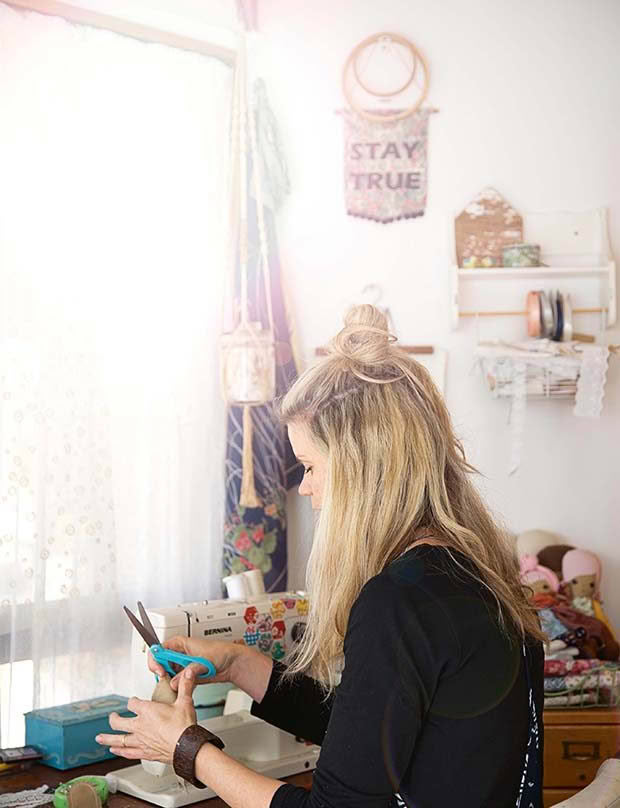
Wide-eyed dolls and wooden toys are in high demand. Dee makes her dolls largely at night when the children are in bed.
When a creative couple combine their passion and energy, alchemy results. From old things of little value emerge new things of great substance. Magic is unleashed.
❱ Dee transforms scraps of mainly vintage fabrics into exquisite dolls, each different
from its predecessor; Jeremy recycles timber into richly grained prams, wheelbarrows, fishing rods (with wooden fish attached)
and chainsaws.
❱ Dee likes to dream, but she never dreamt sewing was in her DNA. Her creative spirit was awakened by childbirth. “I think new mums get creative. They just start making stuff. I was at home, and when the babies were sleeping, I found a pattern for a doll, adapted it and started making them.” Her dolls are partly inspired by her time teaching in Korea and also by the wide-eyed animated characters from her childhood in the 1970s.
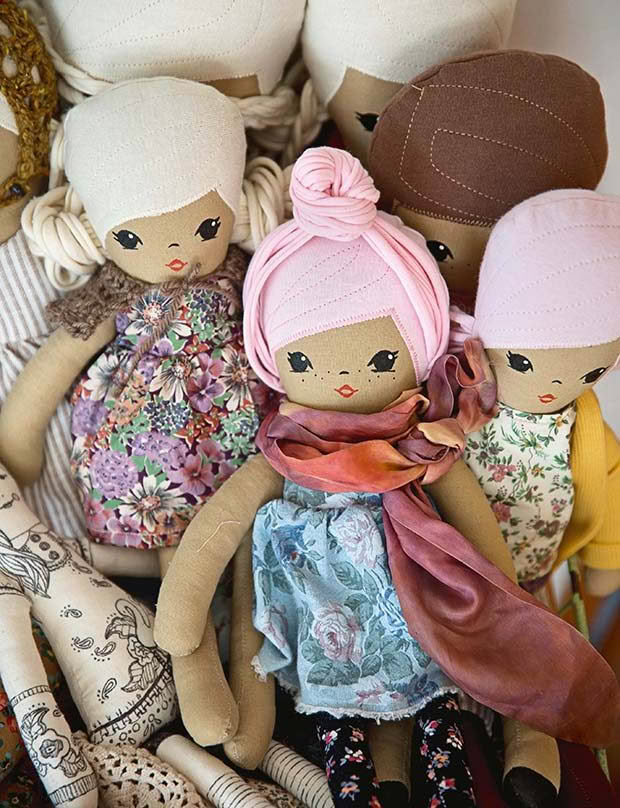
❱ Jeremy’s transformation from furniture-maker to toy-maker was also the result of a life-changing event when he was injured and unable to work. He began to make wooden rifles for his sons. Other families put in requests and demand grew. His range has extended and now includes lawnmowers, sewing machines and mini mailboxes, in which children can leave notes for each other.
❱ The couple say there is a high demand for home-made and original toys. “We had talked about a home business, and always worried about the mortgage. But the timing was perfect.”
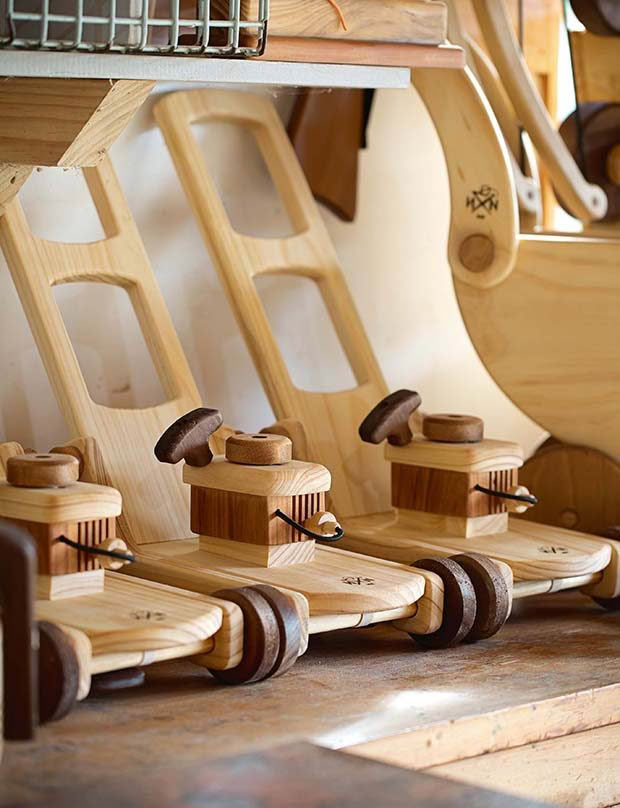
❱ This year, their business, Needle & Nail, won the Community’s Choice prize in the prestigious Etsy Awards. The winning entry, designed and built by Jeremy, was a wooden sewing machine with a mechanism that allows the needle to rise and fall when the handle is turned. Etsy is an international marketplace where people buy and sell goods. Jeremy and Dee’s work can be bought through the Etsy website at needleandnail.etsy.com or through their own website, needleandnail.co.nz
WIN A NEEDLE AND NAIL PRIZE PACK VALUED AT $169
Love this story? Subscribe now!
 This article first appeared in NZ Life & Leisure Magazine.
This article first appeared in NZ Life & Leisure Magazine.

